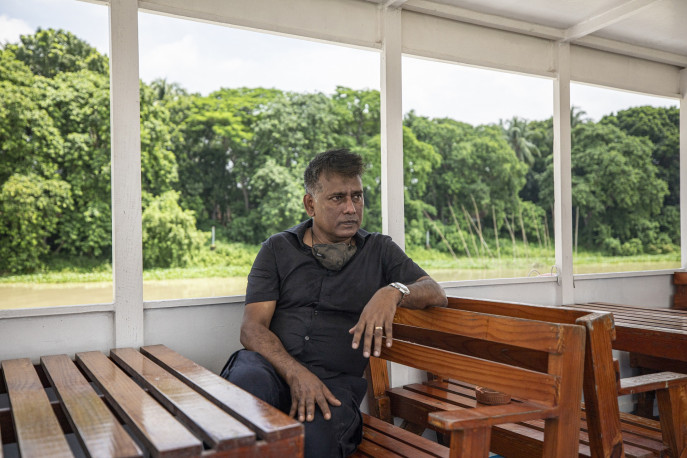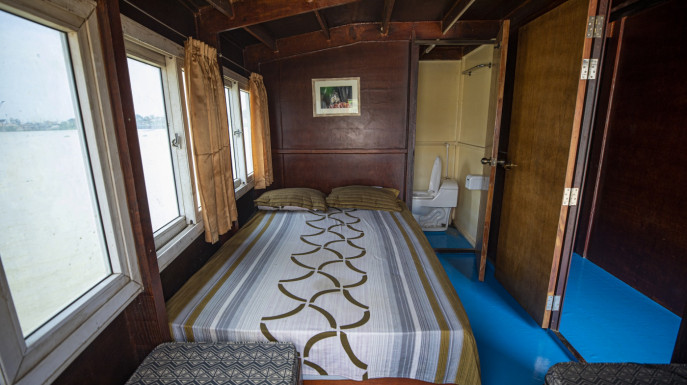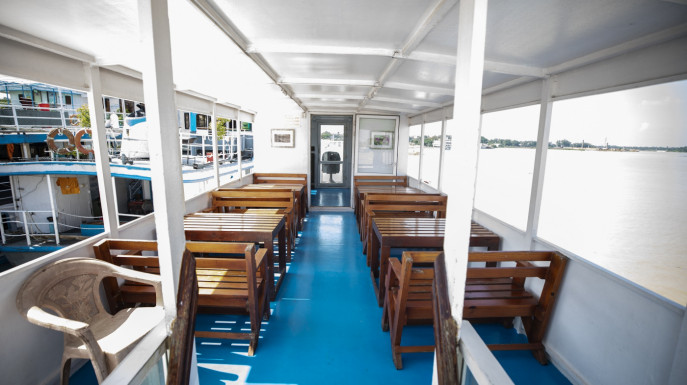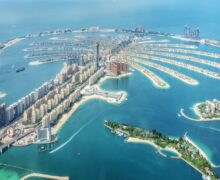
বিদ্যুতচালিত নৌকা বানিয়ে আন্তর্জাতিক প্রতিযোগিতায় বিজয়ী ক্যাপ্টেন আবদুল্লাহ
পরিবেশ দূষণ কিভাবে বন্ধ করা যায় সেই চিন্তা থেকেই দেশে তৈরী সোলার পাওয়ারে চলা ক্যাটামারান জাতীয় এ জাহাজটি। কাঠ এবং ফাইবার গ্লাস দিয়ে তৈরী করা এ জাহাজটি ঘন্টায় দশ থেকে বারো কিলোমিটার গতিতে চলতে পারে। আবদুল্লাহ আল মাহমুদ। পেশায় বিদেশি একটি প্রতিষ্ঠানের ট্যাংকার জাহাজের ক্যাপ্টেন। আধুনিক নৌযান তৈরী করার স্বপ্ন নিয়ে কাজ শুরু করেন একটি ক্যাটামারান জাতীয় জাহাজ তৈরীর। নাম দেন আয়রন।
Amidst all the engine boats that give you a noisy ride in riverine Bangladesh, Iron, a solar powered boat comes as a respite and typifies a perfect tourist-friendly boat.
Ever tried to have a chit-chat with your tourmates while cruising on a traditional diesel-powered boat? Not only will it make you shout to be heard, the deafening roar of the engine will surely destroy the serenity of the lake or the river you are travelling on. What if the vessel you are on only hums a little, lets you converse in a normal pitch and all the while serve you with all sorts of amenities including food and bed? Well, you are in luck because an excursion vessel with the same facilities is now at your disposal. Near the Kanchan bridge area at the end of 300-feet road that cuts through Purbachal town, you will find Iron, a 66-feet cruise vessel that runs fully on solar energy, takes you on a day trip on the Shitalakhya river and lets you enjoy a glimpse of riverine life and natural beauty.

The story of Iron:
The idea of this solar-electric vessel was conceived by Abdullah al Mahmud, a ship captain by profession who works for the American Eagle Tankers.
“Although our country has a very rich history in boat-building, our small boat industry is basically stuck at the mediaeval age. The only upgrade that took place is the addition of diesel engines. I had a dream to work on modernising our boats,” Captain Mahmud told The Business Standard.
Captain Mahmud frequently visited the domestic tourist spots when he felt the need for modernising the boats and equipping them with eco-friendly technologies.

“In 2015, when I went to visit Tanguar Haor to join the ‘haor festival,’ I realised how these ecologically sensitive areas are threatened by diesel boats that pollute the air, water and create noise pollution. This old technology is disturbing the ecosystems and the fauna which includes migratory birds in the case of Tanguar Haor,” recollected Mahmud.
While Bangladesh has been doing good in building industrial vessels of various specs, Mahmud found out there was a lack of expertise in designing and building recreational boats that do little to no harm to the environment.
Adamant about going with the project, Mahmud then contacted French naval architect Michael O’Connor and asked him to design a boat that would suit Bangladesh’s context.
Iron appeared on the sketch board. But who would bring the design to reality?
Mahmud decided to get his hands dirty and took the initiative to build the boat in his own makeshift yard.
“I rented a vacant plot near Bosila bridge on the bank of Buriganga river, and hired some traditional carpenters. I asked them to cut and resize woods according to my needs, and I put them together following the design,” said Mahmud.
The Captain built the hulls totally by himself. Then he fiberglassed those parts, a skill that he never possessed before, and learnt only to do this job.
By 2018, the construction of Iron was completed. Although originally built with Tanguar Haor in mind, the boat eventually found its home on Shitalakhya river, and has been operating there since.
Features
Iron is a catamaran, meaning the boat has two hulls placed parallel to each other instead of one. Built with wood, marine plywood and fiberglass, Iron is 20 metre long and seven metre wide. The main deck of Iron has six cabins with attached bathrooms, and a kitchen.
The upper deck, comprising closed, semi open and open places, holds a couple of table and chair sets for guests. Half of the upper deck is roofed, with solar panels placed on it. The passengers can enjoy plenty of sun in the open deck in the wintry mornings if they so choose. With the two electric engines, the boat can run at a speed of about 10 to 12 kmph. Iron is operating commercially. There are several packages to choose from for a group of maximum 30 people.
Into the machine:
The boat is propelled with two four kilowatt (kW) electric outboard motors. To power the motors, there are 20 pieces of 370-watt solar panels, producing a maximum of 7.5 kw of energy in full daylight. Between the motors and the panels sits the battery bank which can give three-hour backup at night if necessary.
However, the boat operates only during daytime, which is why the battery bank is mostly unused, or just used for smoothing out the power supply between overcast and sunny moments during the monsoon.
The boat’s control is pretty simple: a car-styled wooden steering wheel for direction control, and a motorbike-like twist throttle for speed control at the bow, and a somewhat similar arrangement at the stern.

Two solar charge controllers manage the charging of the two battery banks totalling 18 kWh of capacity. The whole system, including the DC (direct current) outboard motors, is 48 volts.
It would be really nice if the system included a digital display showing the amp draw (measurement of power being consumed) by the motors and the energy produced by the solar panels, as well as the power stored at the battery bank. All modern electric boats have this basic feature. Of course, the absence of such high-end electronic displays gives Iron a locally-made look, for which it exactly is.
High potential:
Captain Mahmud thinks cargo vessels cannot run on solar energy right now, but tourist boats can easily adopt this technology. “Bangladesh has a lot of sunlight all year round. With this free energy source, there is a lot of potential for solar powered vessels” said the boat builder.
Mahmud thinks only this kind of non-polluting boats should be plying the delicate water bodies with ecological importance. Experiments on solar powered boats have been going on in Bangladesh since 2012, but they are yet to see significant commercial success. Iron is so far the largest electric boat of the country.
বাংলাদেশে সৌরশক্তি চালিত প্রমোদতরী II The solar powered yacht in Bangladesh – YouTube
NTV News: https://fb.watch/7LQ5K7raM3/
Newslink: Iron: Capturing the energy of the sun to give you a silent cruise (tbsnews.net)












Recent Comments